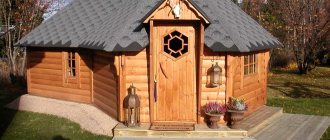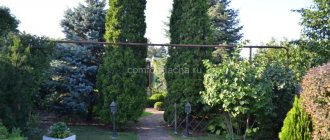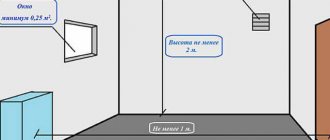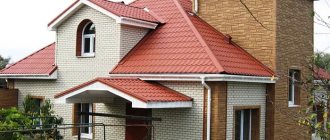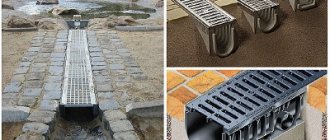A dacha is, first of all, a place that city residents use to grow fruit and vegetable crops. However, often on such a site there is also some kind of structure intended for recreation. If, when purchasing the land, there were no buildings on it, they can be erected. At the same time, you need to understand that any buildings, even on private property, must comply with all rules and regulations of SNiP. Therefore, before you start work, you need to study all the existing requirements and understand what kind of house is allowed to be built on a summer cottage.
Buildings at the dacha
Do greenhouses need to be registered?
Let's start with perhaps the most pressing issue in the last three months.
As soon as the owners of gardens and vegetable gardens learned about the mandatory registration (and, accordingly, taxes) of outbuildings on a foundation, questions began to pour in about what to do with greenhouses and sheds, toilets, etc. The resonance was so high that at the end of April the deputy chairman of the State Duma Irina Yarovaya asked the head of the Federal Tax Service Mikhail Mishustin to check the information and once again clarify “to pay or not to pay.” Specialists from BTI and Rosreestr responded as follows:
The need to register outbuildings, including greenhouses and sheds, depends on the purpose of the site.
“If the land is intended for vegetable gardening, then the construction of capital construction projects is not allowed on such plots. This means that all outbuildings (sheds, bathhouses, greenhouses, sheds, cellars, wells and other structures) cannot be erected as capital ones - on a solid foundation.
But garden plots can accommodate capital outbuildings that are firmly connected to the ground, that is, objects that cannot be moved without compromising their purpose. Rights to such objects are subject to registration.”
Conclusion: if greenhouses on a permanent foundation appear on garden plots, they will have to be demolished; if on garden plots, they will have to be registered.
Please note that the Russian Ministry of Economic Development is currently developing a bill that clarifies the criteria for classifying objects as immovable or movable things. According to the draft law, auxiliary buildings - sheds, greenhouses, etc. - will be considered improvements to the land plot or the main facility, for example, a residential building. Previously registered buildings can be excluded from the Unified State Register of Real Estate in a simplified manner at the request of the copyright holder.
Requirements for residential buildings
There are clear requirements for building a house on gardening land.
For construction:
- No more than three above-ground floors;
- Not higher than 20 m of the entire building;
- The housing must, at a minimum, include: a living room, a kitchen (dining room), a toilet, a shower room, a storage room, etc. In this case, the bedroom must be at least 8 sq.m., the living room at least 12 sq.m., the kitchen at least 6 sq.m;
- The height from floor to ceiling in the living room and kitchen is at least 2.7 m (in the attic floor - 2.3 m);
- Availability of natural light (windows) in the living room and kitchen;
- Availability of systems: heating, ventilation, water supply, drainage, electricity supply;
- In housing during the heating season, the air temperature in the living room should be at least 20 degrees, in the shower room at least 24, in the kitchen and toilet at least 18. In a garden house, such a temperature regime is not required. By the way, this is the difference between a garden house and a residential building.
For land plot:
- Total area of at least 300 sq.m;
- The distance from the wall of the building to the neighboring boundary is at least 3 m;
- The distance from the wall to the fence running parallel to the street (including the highway) is 5 m;
- Distance from utility networks: from gas pipeline 2 m (low pressure), 4 m (medium pressure), 10 m (high pressure), from water supply/sewage 5 m, from power and communication cables 0.6 m, from heating main 2 m.
Why do they want to extend the dacha amnesty again? How many unregistered dachas are there today?
The dacha amnesty, in fact, ended ahead of schedule on March 1, 2021, when the transition period for the new rules that introduced amendments to the Town Planning Code of August 4, 2021 ended. True, a bill has already been introduced to the State Duma to extend the dacha amnesty until March 1, 2022.
“Neither Rosreestr nor the Cadastral Chamber has such data. Local authorities should have information about how many unregistered individual houses and dachas there are.
Because the Unified State Register of Real Estate (USRN) contains information only about real estate objects registered for cadastral registration and registered rights to them. Since 2006, about 13 million property rights have been registered using a simplified procedure.”
New law on SNT in 2021
Since June 2021, Federal Law No. 162 “On amendments to the Federal Law “On gardening and horticulture by citizens for their own needs and on amendments to certain legislative acts of the Russian Federation” has come into force. Now permission to build a country house can only be obtained on lands that are part of territorial zones (TZZ), for which town planning regulations have been approved and limits on permitted development have been developed.
For more information on whether it is possible to build a house on a summer cottage, read our article.
An important change concerns the procedure for legalizing buildings for commercial and residential purposes. If they are built on a plot of less than 6 acres, it has become easier to legalize such real estate and obtain registration. The procedure for transferring a non-permanent structure to a capital one and back has also been simplified; now, this does not require organizing a commission visit; it is enough to obtain a positive opinion from a specialist.
How long does it take for a citizen to build a house?
The notification nature of construction and registration of real estate, which was introduced by amendments to the Town Planning Code, assumes that a person is given 10 years to build an individual residential or garden house . He must meet this deadline and then submit a notice of completion of construction .
If the building was erected according to the rules, then local authorities themselves submit documents for registration to Rosreestr. With such rules, registration of real estate cannot be avoided, otherwise the object will be considered an unauthorized construction and will be ordered to be demolished.
Registration of a house in SNT in 2021
If the owner of the plot built a house, this does not mean that he automatically became its owner. To prevent an object from being forced to demolish, it must be registered.
Now there is a simplified procedure, the so-called “dacha” amnesty, which can be used by:
- owner of the site;
- a person who has title documents to land;
- owners of plots in gardening partnerships.
Before registration, you need to collect a package of documents, the most important of which is the technical plan. As a rule, the plan is drawn up by BTI specialists who are qualified cadastral engineers. In the case when the owner does not have a boundary plan, i.e. the land plot is not registered, registration of the house will be refused. You will also need:
- permission to build a house;
- commissioning certificate;
- documents for land. This may be a gift agreement, purchase and sale agreement, or a corresponding court decision;
- receipt of payment of state duty;
- a completed declaration about the object (the form can be found on the Rosreestr website).
The package of documents is submitted to the MFC. After considering the application, the owner will be able to receive an extract that will confirm the registration of the residential premises. You can also register dachas collectively, through the chairman, who has the right to submit such applications on behalf of all SNT participants.
Is it possible to build two houses on one plot? Or will one have to be demolished?
Theoretically, it is possible to build two houses on one plot of land.
But only in compliance with the norms of land and town planning legislation, building codes and regulations, in particular, the area of the land plot should allow such construction. If “the land plot does not physically allow the construction of a second residential building on it, since the necessary setbacks from the boundaries and other norms and rules (for example, fire safety) are not observed,” then one of the houses will be recommended to be demolished.
But you can try to recognize the right to a second home in court.”
Temporary housing: living conditions
Let's return again to the requirements for living conditions in temporary housing. They are different for everyone, but even though builders are used to dust and heat, if you hire a team to build a house, you need to provide them with a decent life. Moreover, a situation may arise when a temporary structure at the dacha becomes permanent. This option must be foreseen in advance, and therefore, as soon as you move into the building yourself or move the builders there, you need to think through normal, human life and all the conditions.
What do we need for a more or less comfortable life? It is not particularly important what type of temporary structure it will be, but we need a lot of it.
Of course, it is possible without much scope, but strictly according to the list of mandatory needs.
Furniture for sleeping and dining
Most often, construction takes place in the warm season, and few people will have breakfast or lunch in a cabin or trailer. In any case, the table and chairs will be taken outside. Therefore, we will not take up space inside with them. On the contrary, we will advise you to choose from sets of country furniture and home-made accessories, which you can read about in a special article on the topic.
Speaking further about furniture, this could be a shelf or cabinet where valuables, as well as clean clothes, will be stored. Here you can leave personal hygiene items and household chemicals.
The most important furniture is furniture for relaxation. Here, according to the requirements for comfort, there are beds, sofas, folding chairs, couches, trestle beds or folding beds. There should be exactly as many of them as the number of people who will live inside. But don't forget to have one cot somewhere in the utility compartment just in case.
Water inside a trailer or cabin
It’s impossible to live without water, and therefore it is imperative to carry it inside the temporary structure. It’s good if you plan to convert such a place of stay into a permanent one, then you can completely bring water inside. If this is definitely a mobile home that will soon move, then you can simply hang a washbasin inside and put a cooler for drinking water. Moreover, a cooler is the best solution, since here you have both cold and hot water.
If the room is large, a shower can be organized inside, but more often it is located outside. We have already studied the outdoor shower and its construction, tanks for water and for its drainage on the website, and therefore you are welcome to the relevant topics.
Sewerage or regular drain
If you practically do not use water inside, then an ordinary sink inside temporary housing is enough for you. We washed, shaved, rinsed our hands... and simply took the water out of the bucket into the garden. If it is necessary to do it in a more civilized manner, then we bring the sewer system into the building and install it in accordance with all the rules for laying sewer systems, including draining wastewater into a septic tank or cesspool. If you need a middle option, we suggest putting the sewer into a drain, which we have already made from a vertically buried pipe with a drainage layer, or into a storm drain.
Can land be seized from the owner?
Yes . The Land Code contains a provision on the termination of the right to a land plot. If a land plot granted with the right of permanent (indefinite) use or lifelong inheritable possession is not used for 3 years, then it may be seized .
A plot can also be confiscated if the land is not used for its intended purpose. For example, a site is allocated for agriculture, and a store is built there, or an activity organized on the site is harmful to the environment (for example, a car wash operates).
Documentation for registration
Before you begin planning the construction of a building on the site, you need to make sure that all the necessary documents are available. Otherwise, the owner of the land plot may have problems with the law. That is, it is necessary to have documents confirming ownership.
What documents confirm ownership:
- Agreement for the purchase/sale of land;
- A completed and notarized will;
- Deed of gift;
- Documentation on privatization of the dacha;
- Lease or permanent use agreement.
Also, in order to register a house and register in it, you must obtain permission from construction companies. To do this, you need to provide a project drawn up in accordance with all SNiP rules.
How to insulate a country house
Since a country house is not intended for year-round use, it does not need to be insulated (the exception is a frame house, where insulation is required by technology). However. For more comfortable living in the autumn-spring period or during colder summer days, the garden house can be insulated with various materials: polystyrene foam, mineral wool, glass wool. It must be remembered that insulating a house will not save you from the cold if the country house does not have an internal heat source - a stove or electric heater.
A stove is traditionally used for insulation in cold weather. But it is more profitable to buy a double-circuit combination boiler - it can operate on electricity, gas, wood and coal. With its help, you can solve the issue of hot water supply to your country house.
When to buy a dacha
If it is clear how to choose a house for a summer residence, then it is also worth finding out when the purchase will be most justified and allow you to save a little. Many experts note that it is worth choosing a site in spring and autumn, but making a deal from September to December.
If you liked the dacha in rainy and bad weather, then in the summer, when the birds are singing, greenery is growing around, trees and flowers are blooming, it will not leave any buyer indifferent.
Autumn is the best time to buy real estate, as the price of dachas falls due to decreased demand. The cost of land rises in the spring before gardening work. More expensive deals are concluded if the location of the dacha is good (not far from the city, shops, schools and shopping centers).
Dachas located 10-15 km from big cities are suitable for seasonal living. In autumn they are cheaper, and in winter the price drops by another 10-15%. Choosing a house in winter is a bad idea, since you won’t be able to inspect it in detail and determine all the pros and cons.
Tips and nuances
It is optimal to choose a place for a country house so that one of its walls is adjacent to the road. This is convenient for construction - you don’t have to carry building materials far.
To build a garden house, it is better to use foam concrete or frame construction technology. Both options are optimal in terms of price/performance ratio. In order for a house to serve its owners faithfully for many years, knowledge and strict adherence to construction technologies are necessary.
Types of country houses
A country or country house should not be confused with a cottage.
The main differences between a cottage and a country house (or just a dacha) are as follows:
- Dachas can be built on lands in SNT (Garden Non-Profit Partnerships) or ONT (Vegetable Garden Non-Profit Partnerships), cottages - on lands intended for individual housing construction (IHC).
- Cottages have two or more floors. The country house is one-story or has a second attic floor.
- The sizes of buildings vary significantly: the dimensions of a dacha rarely exceed 6 meters in width and 6 meters in length.
- The dacha is not intended for year-round use, so country houses are usually heated using a stone or metal stove, or an electric convector. Cottages, unlike dachas, have a complex heating system using a solid fuel or gas boiler.
The following types of materials are used in the construction of a country house:
- brick;
- wooden beam or log;
- various types of cellular concrete: gas block, foam block, gas silicate;
- frame construction technology with wall cladding with OSB or chipboard boards.

